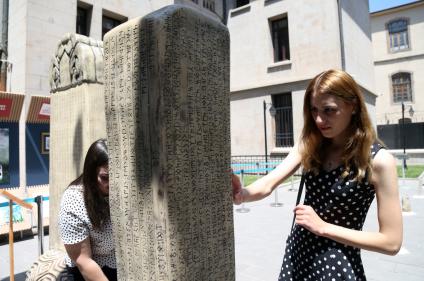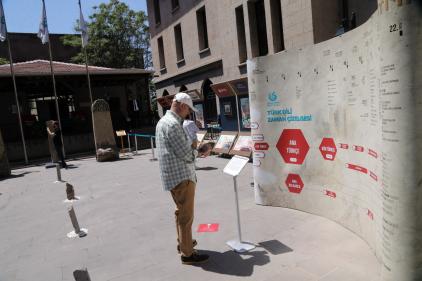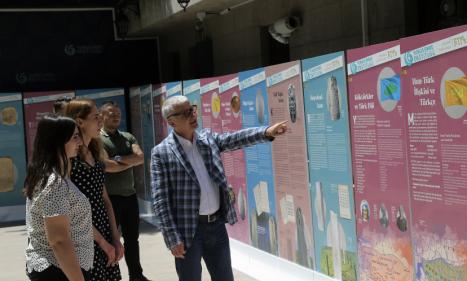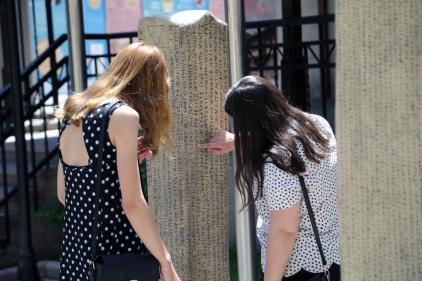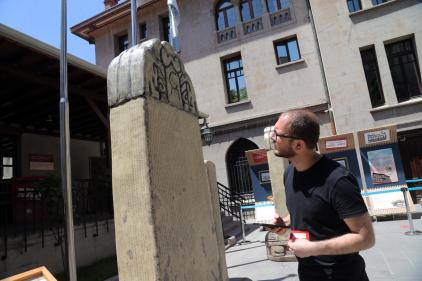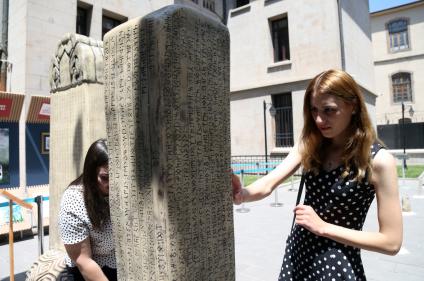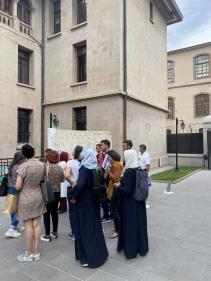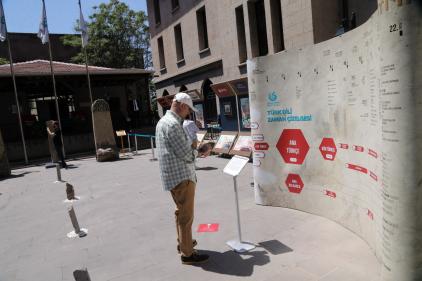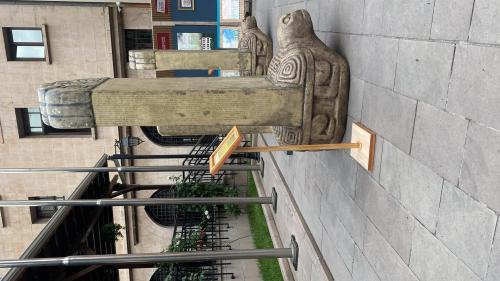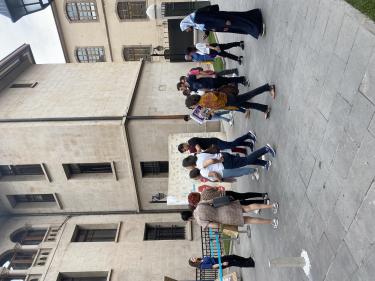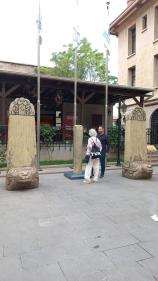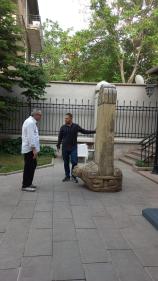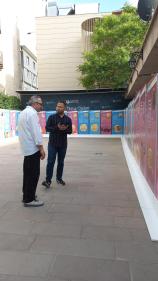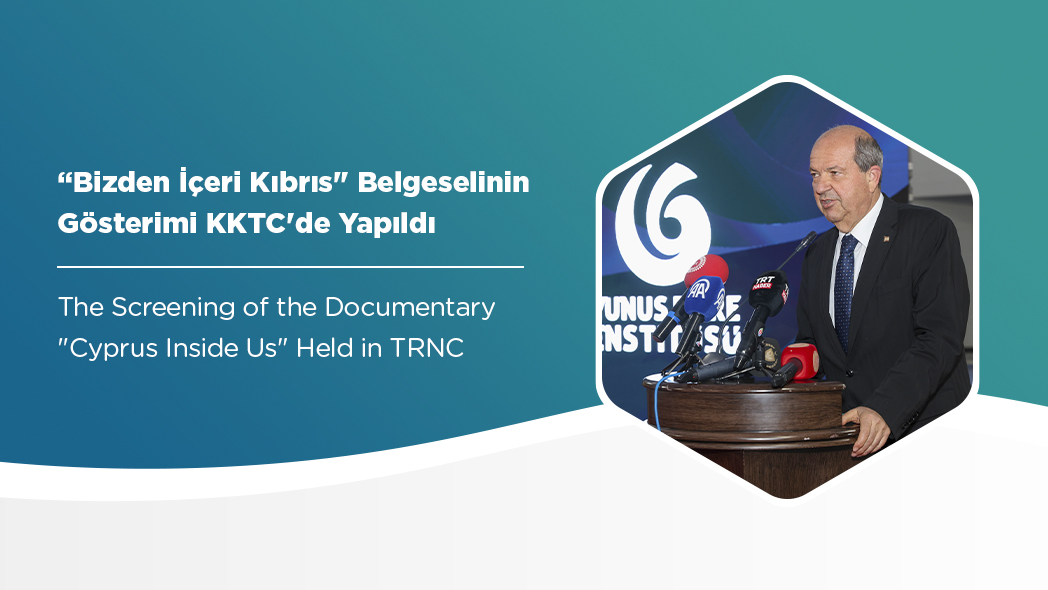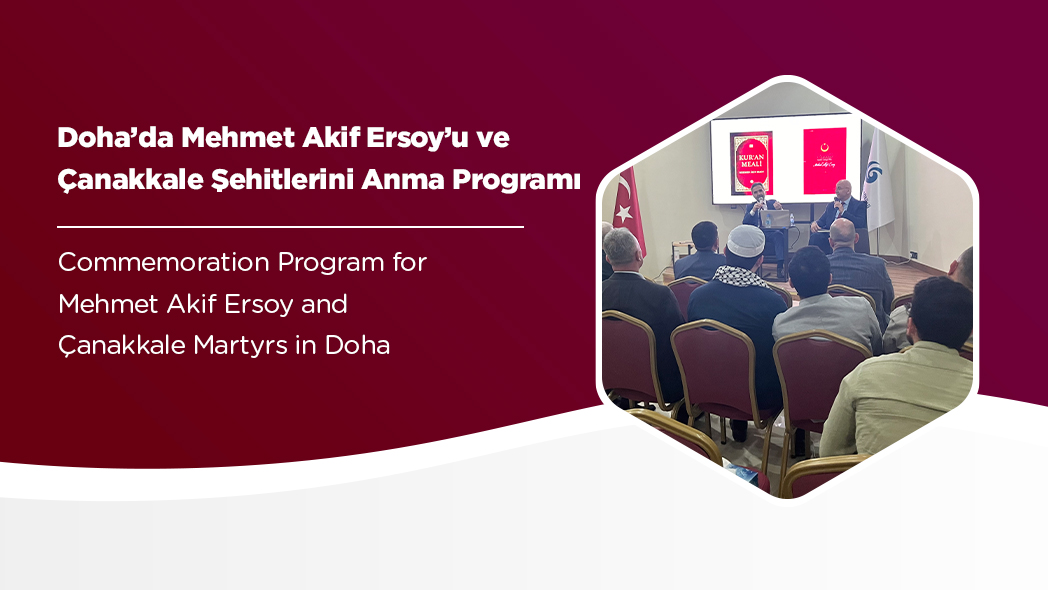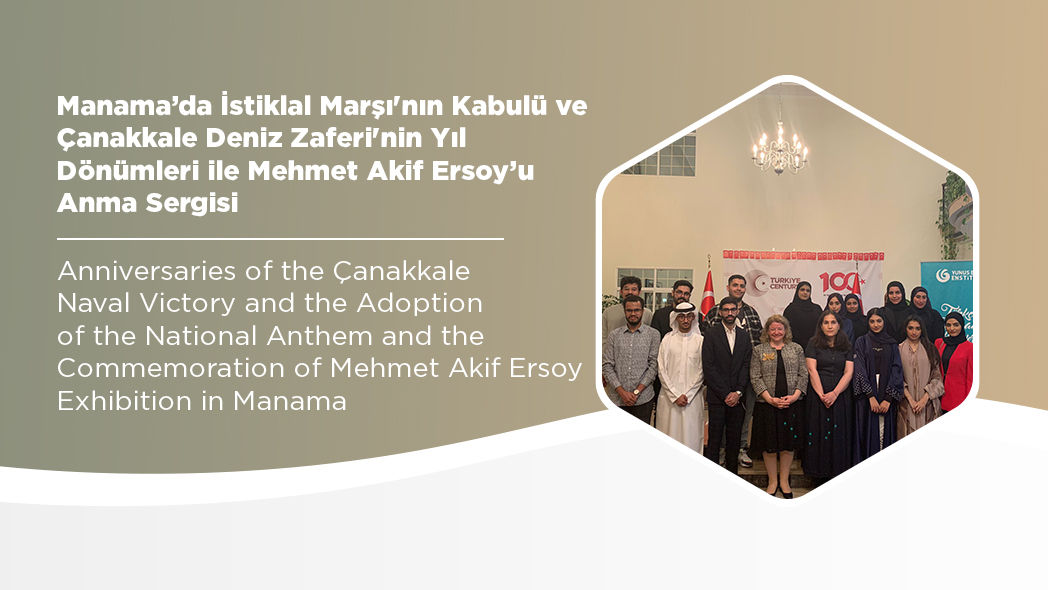The Adventure of Turkish for 5,000 Years at the Exhibition of Turkish Language History
Within the scope of the "Capital Cultural Road Festival", organized by Ministry of Culture and Tourism to promote Ankara’s historical and cultural values to the world, the "History of Turkish Language" exhibition was opened in the Ulus building of the Yunus Emre Institute. The exhibition, which opened its doors on May 28, 2022, reveals the ancient journey of the Turkish language extending from its traces on the clay tablets left from the Sumerians, one of the oldest civilizations in the world, to the ancient Turkish states.
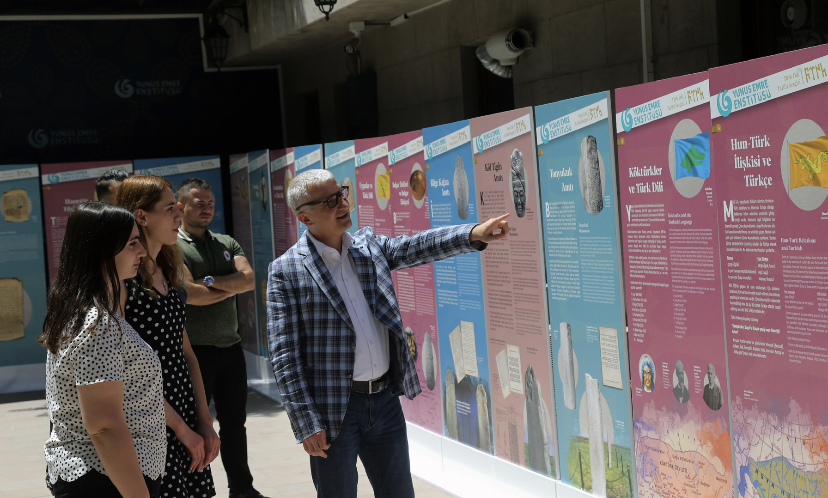
The common words between Turkish and Sumerian indicate that Turkish existed at least 5,500 years ago. The history of Turkish is older than most of the world's languages. Before most of the modern world languages existed, Turkish existed. Turkish, which has become a written language in the very old periods of history; with the Sumerian tablets in 3,500 BC, the 24-letter inscription on one of the silver goblets in the Esik Kurgan belonging to the Saka in 800 BC, and the Alp Er Tonga epic, with the names of the Huns in the 200s BC, with Kokturk eternal stones in the 500s AD, It is the only tool that carries the thought system and culture of the Turkish nation to the present day with the Uighur texts in the 700s and the Karahanli texts in the 900s AD.
The migration of Turks to different geographies and their constant relocation for various reasons have caused a great interaction between the nations of the world, and the Turkish language has also developed along with the Turkish culture. For example, Turkish, which took many words from Arabic with Islam, also gave many words to Arabic dialects. It is possible to understand the Turk and the whole of the material and spiritual values produced by the Turk through Turkish, which both nourishes different cultures and feeds from them in these different places and times. Today, Turkish, which holds 250 million people together in an area of 12 million square kilometers from Bosnia to the Great Wall of China, is also the 5th most spoken language in the world. Nowadays, with the development of technological possibilities, Turkish is experiencing its golden age, in which the most works have been given in its history.
Within the scope of the "Capital Cultural Road Festival" implemented by the Ministry of Culture and Tourism in order to draw attention to Ankara's historical and cultural values on an international scale, the exhibition, which includes a whole "History of Turkish Language" from the beginning to the present, opened to visit on Saturday, May 28, 2022, at the historical Ulus building of our Institute to visit. In general, the exhibition consists of three main sections “Timeline of Turkish Language”, “Copies of Bilge Kagan, Köl Tigin and Tonyukuk Inscriptions”, and “Historical Images of Turkish Language”.
TIMELINE OF TURKISH LANGUAGE FROM ALTAIC LANGUAGE UNION TO PRESENT
With the "Timeline of Turkish Language" prepared by Prof. Dr. Feyzi Ersoy, the historical development of Turkish is shown as a whole in an area of 5 square meters. In this table, which summarizes the historical course of the Turkish language, the periods of Turkish language are presented together with some important linguistic data from the time of the Altaic Language Union to the present.
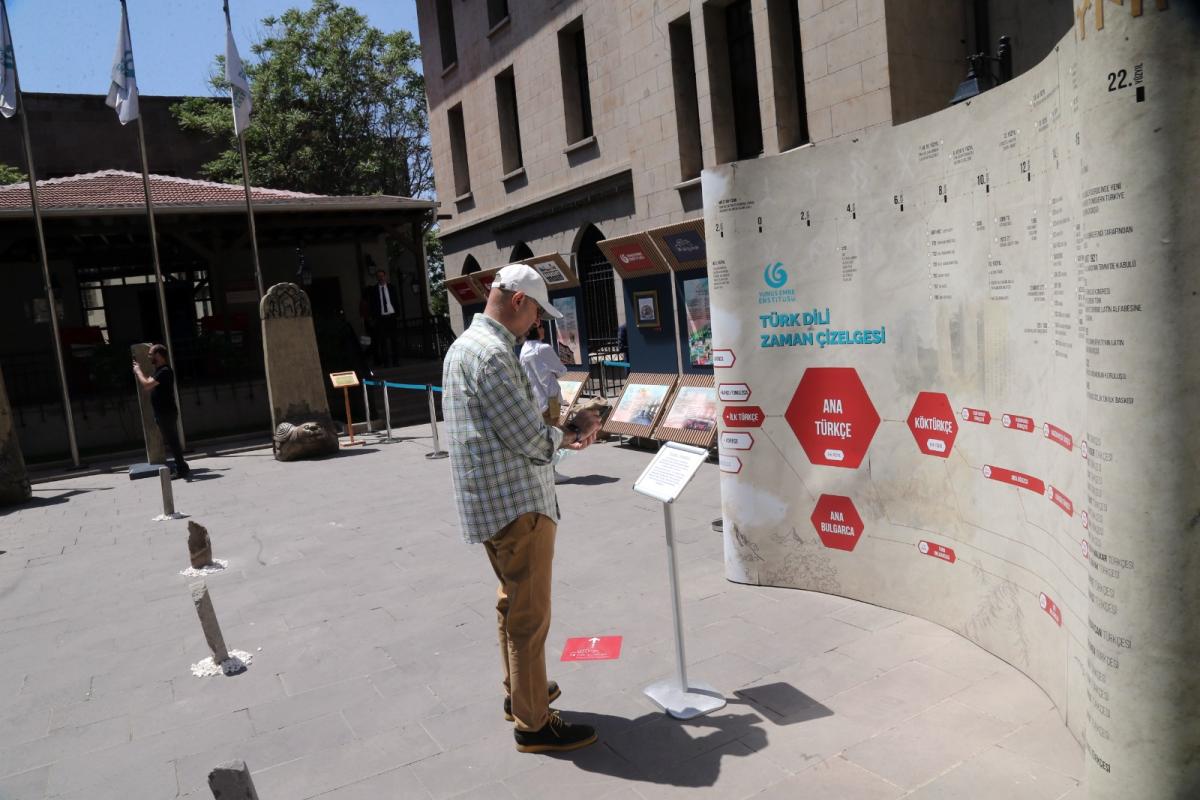 "Copies of the Bilge Kagan, Köl Tigin and Tonyukuk Inscriptions" prepared by Süleyman Aydın, Turgut Türker, Mahmut E. Sevilay, and Belgin E. Dursun under the scientific consultancy of Prof. Dr. Erhan Aydın and Prof. Dr. Şaban Doğan in 1/1.5 scale and in three dimensions, is important in terms of giving an idea about the first written texts of Turkish, which are the most voluminous since they include the original texts as a whole. In front of the three inscriptions, there are four "balbal" carved statues symbolizing the slain enemies. Three great eternal stones, the originals of which are found in Mongolia today, open the doors of the Köktürk period to its visitors without looking for their originals.
"Copies of the Bilge Kagan, Köl Tigin and Tonyukuk Inscriptions" prepared by Süleyman Aydın, Turgut Türker, Mahmut E. Sevilay, and Belgin E. Dursun under the scientific consultancy of Prof. Dr. Erhan Aydın and Prof. Dr. Şaban Doğan in 1/1.5 scale and in three dimensions, is important in terms of giving an idea about the first written texts of Turkish, which are the most voluminous since they include the original texts as a whole. In front of the three inscriptions, there are four "balbal" carved statues symbolizing the slain enemies. Three great eternal stones, the originals of which are found in Mongolia today, open the doors of the Köktürk period to its visitors without looking for their originals.
The third part of the Turkish Language History exhibition is the "Turkish Language History Images" prepared by Prof. Dr. Feyzi Ersoy. In this section, there are 45 plates of “80x180” centimeters. The plates contain information and visuals about the Place of Turkish among World Languages, Sumer-Turk, Saka-Turk, Hun-Turk Relations, and Kokturk, Bulgarian, Uyghur, Karakhanid, Khwarezm, Kipchak, Chagatai, Old Anatolian Turkish, and the main authors and works from the Ottoman period. In this section, there are also 5 plates containing Turkish and English information about Kokturk, Uyghur, Arabic, Cyrillic and Latin letters, which are the 5 most used alphabets by Turks throughout history.
MEANINGFUL SURPRISE TO VISITORS
How about taking a short time trip in the history of the Turkish language and getting a photo of Tonyukuk as a souvenir in which your name and surname written in Kokturk letters from the specially prepared "Turkish Language History Handbook", in the garden of Yunus Emre Institute in Ulus? We invite everyone who wants to see the phases of our Turkish, which is truly a world language, and pieces of important examples of our language, to our exhibition until June 12.


